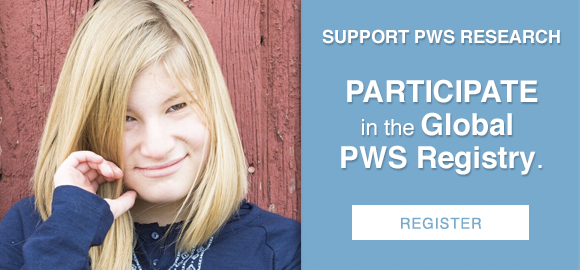This blog provides a brief summary of the PWS Registry presentation by research team member Jessica Bohonowych at the FPWR 2017 conference. You can watch the full presentation by clicking on the embedded video below.
In case you don't have time to watch the full video, we've captured some of the key points in the notes below.
Jessica Bohonowych, Ph.D., has a doctorate in Pharmacology and Toxicology from the University of California, Davis. Her presentation described the Global Prader-Willi Syndrome Registry and how it’s accelerating PWS research and clinical trials.
“I’m going to let you in on a little secret,” Jessica opened by saying. “You guys are all members of the Research Team.”
How? By participating in the PWS Registry, either for the first time or by updating information that’s already included.
Goals of the PWS Registry
Goals of the two-year-old global registry include: developing a comprehensive database of individuals with PWS, getting patients enrolled in clinical trials faster by speeding the recruitment process, guiding standards of care and prioritizing areas of unmet need.
Researchers are also trying to capture the full global diversity of PWS along characteristics such age, socioeconomic status, geography, ethncity, living conditions and access to care.
Jessica used a quilt analogy to explain the importance of every individual's involvement with the registry.
“If you think of … a beautiful, intricate story quilt, it's made up of a hundreds of little panels. Every single one of you is a panel of that quilt,” she said. In order to fully understand what treatment efforts are being made, what’s working and what isn’t, “we need every single story, every single patchwork on that quilt.”
An independent review board has verified that data in the registry is being collected ethically and stored “in a safe and secure way.”
Benefits of the Registry
The web-based registry collects patient data through a series of 37 – soon to be 38 – “surveys” that cover all aspects of PWS. The surveys vary in length depending on the responses. Respondents can save surveys at any point and log in later to complete them.
Among the benefits to patients and their parents:
- Participants can use the registry to see de-identified data from other respondents, such as:
- Age at diagnosis: 80 percent of registry participants were diagnosed before the age of 12 months
- Distribution of PWS genetic subtype: the percentage of UPD is higher than previously thought
- Length of stay in the NICU after delivery: 50 percent of participants spent more than 20 days in the NICU after birth
- Growth hormone use, including when people start, the ease of access, brands used, etc.
- Anxiety in PWS & treatment options
- Real world experiences with sleep apnea and the low rates of C-Pap compliance
- A new feature also allows for existing surveys to be updated with new information.
Resources
Resources related to the registry include a getting started video & PDF, as well as a Facebook group where people can ask questions and request data.
Q&A
In response to questions from the audience, Jessica noted:
- The research team's recommendation is for patients and parents to update the registry once a year or after something has happened, such as a surgery or medical event. Respondents have access to updating the information as often as they need to.
- Reminders to update the registry can be sent once a year, but patients must make sure that their preferences allow for them to be contacted directly by the registry team.
- Work is underway to improve completion rates for the surveys; some have 500 responses, while others have far fewer.








